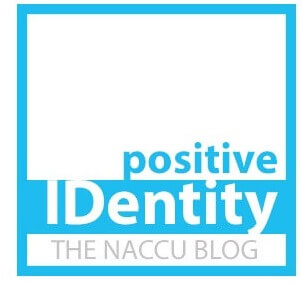Integration in Action: How Three Campuses Are Making Student Life Easier
 Integration in Action: How Three Campuses Are Making Student Life Easier
Integration in Action: How Three Campuses Are Making Student Life Easier
Recognizing the 2025 NACCU Innovative Technology Award Recipients: University of Ottawa, Carleton University, and Algonquin College
In today’s higher education environment, students are often expected to navigate a maze of separate systems and processes just to access basic services. Whether it is obtaining a student ID, renewing a transit pass, or confirming their enrollment status, these small but essential tasks can quickly add up, especially at the start of a term.
The University of Ottawa, Carleton University, and Algonquin College decided to challenge the status quo. Together, they launched an ambitious multi-year project to eliminate inefficiencies and improve the student experience by integrating the student ID and regional transit pass (U-Pass) into a single unified campus card. Their success earned them the 2025 NACCU Innovative Technology Award.
 From Redundant Systems to Seamless Integration
From Redundant Systems to Seamless Integration
The challenge was clear. Students in Ottawa carried two cards: a student ID and a U-Pass for public transportation. Each card required its own issuance, renewal, and eligibility checks. Systems could not detect real-time changes in student status, which led to fraud, confusion, and long lines at kiosks each term.
To solve this, the three institutions partnered with OC Transpo and Société de transport de l’Outaouais and developed a shared API-enabled system that would
- Integrate student eligibility data in real time
- Block ineligible or fraudulent U-Pass usage
- Remove the need for manual card renewals
- Eliminate duplicated administrative work
The result was a single card that provides access to both campus and transit services, backed by a system that updates dynamically as student statuses change.
Why This Innovation Matters
The project goes far beyond card convenience. It reimagines how institutions can collaborate across campuses and with public agencies to improve outcomes. The impact is measurable:
- Four hundred hours saved in administrative labor at one school alone
- Fifty thousand dollars in annual cost savings from reduced card issuance logistics
- Seventy thousand students served with no need to manually renew U-Passes
- Significant reduction in fraudulent card use
- Decreased environmental impact through reduced card production
All of this was achieved without a commercial solution. Each step including data sharing, API development, and card system integration, was customized to fit the unique needs of multiple campuses and transit agencies. That spirit of collaboration and innovation is what sets this project apart.
Encouraging a Culture of Integration and Collaboration
As institutions reflect on how to improve student experiences, this award-winning project offers a model to follow. It encourages higher education professionals to
- Think about the steps students must take to access services
- Evaluate where manual processes could be automated
- Identify opportunities for cross-departmental collaboration
- Consider how systems can work better together
Whether it is housing, health services, dining, or transportation, institutions can simplify access by rethinking silos and investing in smart integrations.
What Comes Next
With physical card systems now streamlined, the next step is even more ambitious. Mobile credentials are on the horizon. Soon, students will be able to access all their campus and transit services directly from their smartphones. This upcoming shift will build on the current infrastructure, enhancing both convenience and accessibility.
As more institutions explore the move to mobile, the Ottawa collaboration stands as a scalable and successful blueprint. The project also sets the stage for broader provincial partnerships and serves as proof that thoughtful integration can yield real results.
Congratulations to the University of Ottawa, Carleton University, and Algonquin College for their vision, collaboration, and commitment to student-centered innovation.
Is your institution thinking about integration opportunities? Take a fresh look at how your students interact with campus systems. The next big breakthrough might come from a new partnership or a streamlined process.
Frequently Asked Questions:
Q: How can campuses integrate student ID cards with public transit systems to reduce friction for students?
A: By partnering with local transit agencies and leveraging API-driven data sharing, campuses can combine student ID and transit access into a single card or credential. This integration allows for real-time updates to eligibility, eliminates the need for multiple cards, and streamlines processes for students and staff. The University of Ottawa, Carleton University, and Algonquin College achieved this by developing a shared backend system that communicates directly with transit infrastructure, simplifying the user experience for over 70,000 students.
Q: What are examples of successful campus partnerships that streamlined student access to services?
A standout example is the collaboration between three Ottawa institutions—University of Ottawa, Carleton University, and Algonquin College. Together, they unified their student ID and U-Pass systems into a single credential. Their coordinated effort with local transit agencies removed the need for manual card renewals, improved fraud detection, and significantly reduced administrative overhead. This project highlights how cross-institutional partnerships can deliver tangible benefits for students while modernizing campus operations.
Q: How do universities automate card eligibility updates in real time to prevent fraud and reduce administrative workload?
Automation can be achieved through API-based integration between the campus card system, student information systems, and external service providers. In the Ottawa U-Pass project, institutions pushed real-time updates to transit systems whenever a student's status changed, such as moving from full-time to part-time. This eliminated reliance on manual hotlists, reduced fraudulent use, and saved hundreds of hours in administrative labor. A well-integrated system improves accuracy, speeds up service, and enhances security.
Looking to streamline services on your campus?
Join NACCU to connect with a nationwide community of campus card professionals who are leading innovation through collaboration. Whether you're launching a new integration project or exploring ways to improve the student experience, NACCU members are ready to share insights, lessons learned, and proven strategies.
Become a NACCU member today and gain access to the expertise, resources, and support that help turn big ideas into practical solutions.
